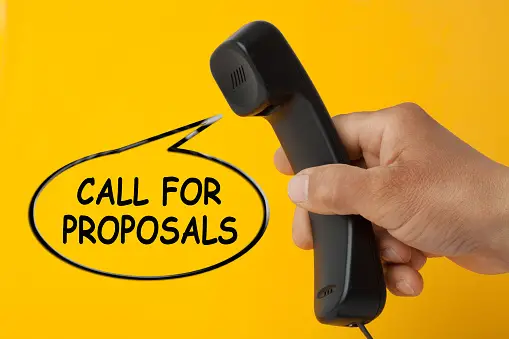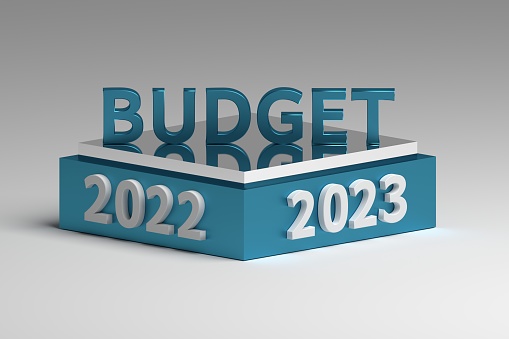Grant Proposal Writing for Mental Health Programs can be challenging. This blog provides an in-depth guide to grant proposal writing, including the key components of a successful grant proposal, tips for effective grant proposal writing, and practical examples.
Mental health professionals seeking funding for their initiatives can use this guide to develop compelling grant proposals that improve access to treatment and support, reduce stigma, and enhance the quality of life for those affected by mental illness.
Mental health is a critical issue affecting individuals, families, and communities worldwide. Mental health problems account for a significant proportion of the global burden of disease, and their impact on individuals, families, and society can be devastating. Mental health programs can help improve access to treatment and support, reduce stigma, and enhance the quality of life for those affected by mental illness.
However, funding for mental health programs can be limited, making grant proposal writing a critical skill for mental health professionals seeking to secure funding for their initiatives.
In this article, we will provide an in-depth guide to grant proposal writing for mental health programs.
We will cover the essential components of a successful grant proposal, offer tips for effective grant proposal writing, and provide practical examples to help illustrate the key points.
Key Components of a Successful Grant Proposal
A successful grant proposal for mental health programs must include the following key components:
Project Summary:
- The project summary is a brief overview of the proposed mental health program. It should provide a clear description of the program’s goals, objectives, and expected outcomes. The project summary should be written in clear and concise language that is easy to understand.
Example: The Mental Health Education and Awareness Program aims to increase public awareness of mental health issues and reduce the stigma associated with mental illness. The program will provide education and training to community members, healthcare providers, and employers to improve understanding and support for those affected by mental illness.
Needs Assessment:
The needs assessment is a critical component of the grant proposal. It should provide evidence of the need for the proposed mental health program, including statistics, research findings, and community input. The needs assessment should demonstrate that the proposed program addresses a significant gap or unmet need in mental health services.
Example: According to the World Health Organization, depression is a leading cause of disability worldwide, with an estimated 264 million people affected. In our community, there is a significant lack of awareness and understanding of mental health issues, which contributes to stigma and a reluctance to seek help. This program aims to address this gap by providing education and training to improve understanding and support for those affected by mental illness.
Program Goals and Objectives:
The program goals and objectives should be clearly defined and measurable. They should outline the specific outcomes the program aims to achieve and the steps that will be taken to reach those goals. The goals and objectives should be linked to the needs assessment and should demonstrate how the program will address the identified gaps in mental health services.
Example: The goals of the Mental Health Education and Awareness Program are to increase public awareness of mental health issues, reduce stigma associated with mental illness, and improve access to mental health services.
The objectives of the program include developing educational materials and resources, delivering training sessions to community members, healthcare providers, and employers, and partnering with local organizations to increase access to mental health services.
Program Design and Implementation:
The program design and implementation should provide a detailed description of the activities and strategies that will be used to achieve the program goals and objectives. The program design should be evidence-based and should draw on best practices in mental health promotion and prevention. The implementation plan should outline the timeline for program activities and the roles and responsibilities of program staff and partners.
Example: The Mental Health Education and Awareness Program will be delivered through a combination of in-person and online training sessions, educational materials, and community events. The program will be implemented over a twelve-month period, with training sessions and community events scheduled throughout the year. Program staff will work closely with local healthcare providers, employers, and community organizations to ensure the program’s success.
Evaluation and Sustainability:
The evaluation plan should outline how the program’s success will be measured, including the specific metrics that will be used to evaluate the program’s impact. The sustainability plan should demonstrate how the program will continue beyond the grant period and how it will be integrated into existing mental health services. Both the evaluation and sustainability plans should be realistic and achievable, with clear targets and timelines.
Example: The Mental Health Education and Awareness Program will be evaluated using a combination of surveys and focus groups to measure changes in knowledge and attitudes towards mental health issues, as well as increased utilization of mental health services.
The sustainability plan includes developing partnerships with local organizations to continue the program beyond the grant period and integrating the program’s activities into existing mental health services.
Tips for Effective Grant Proposal Writing
Writing a successful grant proposal for mental health programs requires careful planning, attention to detail, and a strong understanding of the needs of the target population. Here are some tips to help you write an effective grant proposal:
Start Early:
- Grant proposal writing takes time and requires careful planning. Begin the process as early as possible to allow time for research, program development, and writing.
Understand the Funder:
- Research the funding organization to understand their priorities, requirements, and evaluation criteria. Tailor your proposal to align with the funder’s goals and priorities.
Use Clear and Concise Language:
- Write in clear and concise language that is easy to understand. Avoid jargon and technical language that may be unfamiliar to the funder.
Use Evidence-based Strategies:
- Use evidence-based strategies in your program design and implementation. Draw on research and best practices in mental health promotion and prevention to develop effective programs.
Emphasize the Program’s Impact:
- Emphasize the potential impact of the program on the target population, as well as the broader community. Provide clear evidence of the need for the program and the potential benefits it will provide.
Demonstrate Capacity:
- Demonstrate your organization’s capacity to successfully implement the program. Provide information on your organization’s experience, staff expertise, and partnerships with local organizations.
Develop a Realistic Budget:
- Develop a realistic budget that reflects the program’s goals and objectives. Ensure that the budget is well-justified and includes all necessary expenses.
Practical Examples
Here are two practical examples of successful grant proposals for mental health programs:
Example 1: The Mental Health First Aid Program
- The Mental Health First Aid Program is a community-based mental health initiative that aims to improve access to mental health services and reduce stigma associated with mental illness. The program provides training to community members, healthcare providers, and first responders to identify and respond to individuals experiencing a mental health crisis. The program includes a combination of in-person and online training sessions, educational materials, and community events.
The grant proposal for the Mental Health First Aid Program included a detailed needs assessment, highlighting the lack of awareness and understanding of mental health issues in the target community. The proposal outlined clear goals and objectives for the program, as well as a detailed program design and implementation plan. The evaluation plan included pre- and post-training assessments to measure changes in knowledge and attitudes towards mental health issues, as well as increased utilization of mental health services. The sustainability plan included partnerships with local organizations and the integration of the program’s activities into existing mental health services.
The proposal was successful in securing funding from a national mental health organization, and the Mental Health First Aid Program has been implemented in multiple communities across the country.
Example 2: The Peer Support Program
- The Peer Support Program is a mental health initiative that aims to improve access to mental health services for individuals experiencing mental health challenges. The program provides peer support services, including one-on-one support, support groups, and crisis intervention, delivered by trained peer support workers with lived experience of mental illness. The program also includes outreach and education activities to raise awareness of mental health issues and reduce stigma.
The grant proposal for the Peer Support Program included a comprehensive needs assessment, highlighting the lack of peer support services in the target community and the high demand for such services. The proposal outlined clear goals and objectives for the program, including improving access to mental health services and reducing social isolation among individuals experiencing mental health challenges. The program design and implementation plan included a detailed description of the peer support services and the outreach and education activities, as well as the roles and responsibilities of program staff and partners.
The evaluation plan included measuring changes in the number of individuals accessing mental health services, as well as changes in social connectedness and overall well-being. The sustainability plan included developing partnerships with local mental health organizations and integrating the peer support services into existing mental health services.
The proposal was successful in securing funding from a local foundation, and the Peer Support Program has been implemented in multiple communities, with positive feedback from participants.
Conclusion
By following the tips outlined in this article and using the practical examples provided, mental health professionals can develop successful grant proposals and secure funding to improve access to mental health services and reduce stigma associated with mental illness.




